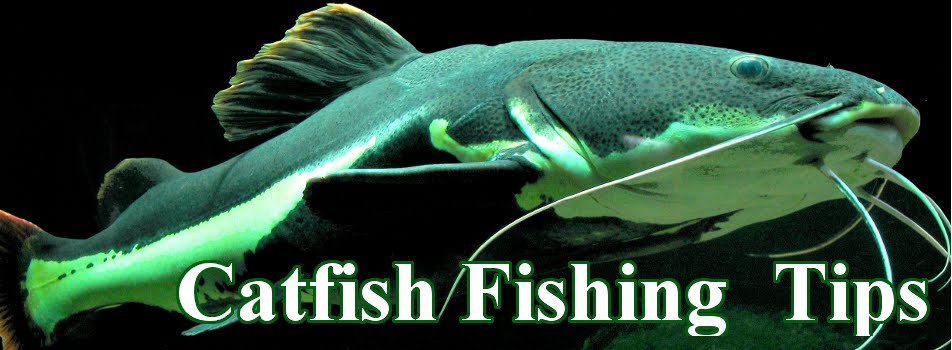How These Tips-On-Catfishing Can Improve Your Fishing Abilities!
If you're a beginner at catfishing, then these tips can help you
to catch these cats by knowing the basics first. We talk more about what
else is important to catch them in other articles.
5 Catfishing tips
Tip number 1. Know the location where you want to go fishing. Make several visits first to the spot you choose. This will help you to know how large the catfish grow in that particular area. You may be amazed how big these cats can get. Know first the size of catfish and then taking the right equipment sounds so logically. But believe me it is not. A lot of people are caught out because they have not done some research beforehand. It may come from finding their hiding places and where to lower the boat if they want to go fishing by boat.
Tip number 2. Bring appropriate fishing gear. Don't forget to bring different rods, small and big fishing hooks and some different reels on your trip. That way you are prepared for any size of these cats. You can find all of it in your local fishing shop or if you are on a tight budget on Internet. The prices range from very affordable to very expensive. Bear in mind, larger equipment's is more expensive but is advisable for larger catfish.

Tip number 3. Choose the best bait. The primary reason here is simple, you will find a wide variety of baits you can choose from. Grasshoppers are one of them. Throwing some grasshoppers as your main bait, school of catfish will definitely swim towards it. You can also use perch, frogs, Chicken livers or shad. Some of the cats like lures, but not all of them. Some of them are very picky in choosing their food and only want fresh and stinky bait. If you can, make good homemade smelly bait yourself.
Tip number 4. The fresher your baits the better. It's not simply selecting the bait you prefer to use. The question is more on, which bait is suitable for which cat. Maintaining the quality of your bait is also important. When bait is chilled for too long, the smell and flavour is greatly reduced. In other words, frozen baits are not recommended if you have stored them to long. Make your bait the night before, and use that bait straight away.
Tip number 5. Warmer water is better. The temperature of the water is also an important element that can affect your catch. Usually, catfish prefer to live in warmer water. About 70 or 80 degrees Fahrenheit is good. The colder the water, the less active they are. There are different rules if you want to go fishing in the winter. I will come back to that in another article. Different seasons different rules.
5 Catfishing tips
Tip number 1. Know the location where you want to go fishing. Make several visits first to the spot you choose. This will help you to know how large the catfish grow in that particular area. You may be amazed how big these cats can get. Know first the size of catfish and then taking the right equipment sounds so logically. But believe me it is not. A lot of people are caught out because they have not done some research beforehand. It may come from finding their hiding places and where to lower the boat if they want to go fishing by boat.
Tip number 2. Bring appropriate fishing gear. Don't forget to bring different rods, small and big fishing hooks and some different reels on your trip. That way you are prepared for any size of these cats. You can find all of it in your local fishing shop or if you are on a tight budget on Internet. The prices range from very affordable to very expensive. Bear in mind, larger equipment's is more expensive but is advisable for larger catfish.
Tip number 3. Choose the best bait. The primary reason here is simple, you will find a wide variety of baits you can choose from. Grasshoppers are one of them. Throwing some grasshoppers as your main bait, school of catfish will definitely swim towards it. You can also use perch, frogs, Chicken livers or shad. Some of the cats like lures, but not all of them. Some of them are very picky in choosing their food and only want fresh and stinky bait. If you can, make good homemade smelly bait yourself.
Tip number 4. The fresher your baits the better. It's not simply selecting the bait you prefer to use. The question is more on, which bait is suitable for which cat. Maintaining the quality of your bait is also important. When bait is chilled for too long, the smell and flavour is greatly reduced. In other words, frozen baits are not recommended if you have stored them to long. Make your bait the night before, and use that bait straight away.
Tip number 5. Warmer water is better. The temperature of the water is also an important element that can affect your catch. Usually, catfish prefer to live in warmer water. About 70 or 80 degrees Fahrenheit is good. The colder the water, the less active they are. There are different rules if you want to go fishing in the winter. I will come back to that in another article. Different seasons different rules.
There's a lot more to learn about catching these cats but by using these five tips on catfishing can make your fishing trip a successful one. To know more great Catfishing-Tips, visit my website about http://www.catfishanswers.com.
Article Source:
http://EzineArticles.com/expert/Chris_Hanzeren/1005054

